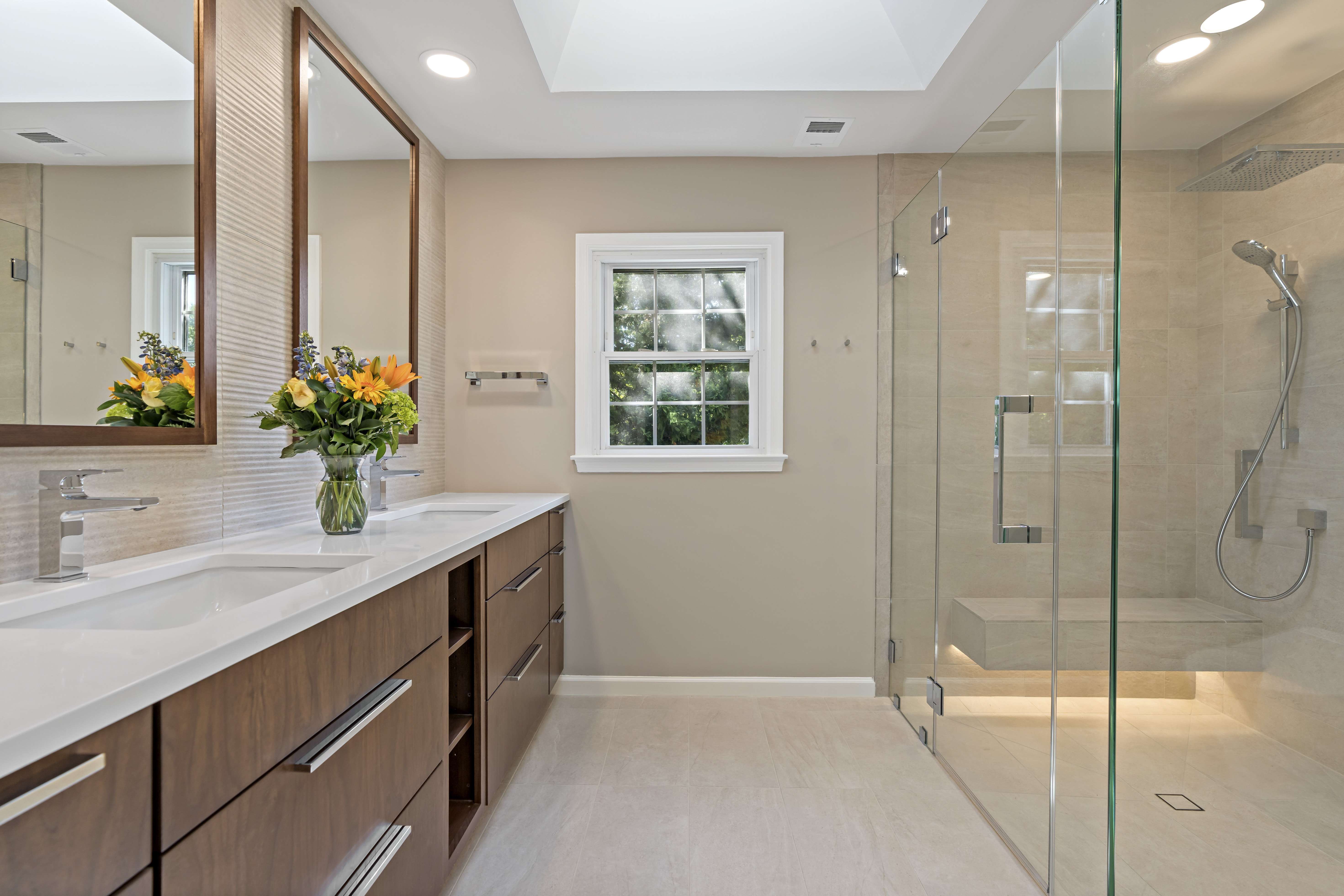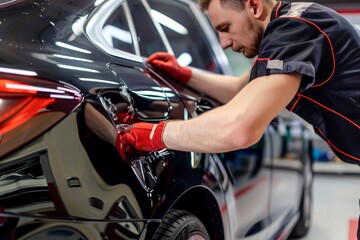Tacoma Bathroom Remodeling is a great way to upgrade your home’s functionality, increase efficiency, and add value. Consider whether your objectives are cosmetic or practical, such as adding more storage, improving accessibility, or reducing the risk of safety hazards like mold and mildew.
Full remodels usually involve changing the layout of the bathroom and may require a permit. Replacement remodels are typically less intensive but still allow you to dramatically change the look and feel of your bathroom.

Whether you want a simple makeover or a complete overhaul, your options are endless. A bathroom remodel can enhance your living experience, increase the value of your home, and add functionality. However, it is important to understand the factors that impact the total cost of your project.
It’s essential to establish a budget before starting any remodeling project. During the planning phase, you can also identify any issues that may need to be addressed. For example, a leaky shower or tub, outdated fixtures, and a cramped layout are all common problems that can drive up the overall remodeling costs.
The cost of a remodel depends on the scope and materials used. The more labor-intensive tasks and the more extensive material selections, the higher the project’s overall cost. For example, a tub to shower conversion with new walls, flooring, and shower head requires a larger scale of work than simply replacing a sink faucet or changing out the vanity.
Other important variables include the location of your bathroom, which can significantly influence costs. For example, a NYC bathroom remodel is more expensive than one in another city due to the higher cost of living and greater demand for skilled professionals.
It is also crucial to determine your long-term plans for your home and consider what you hope to gain from the remodel. If you plan to sell soon, a minor renovation may be sufficient, but if you intend to stay in your home for many years, a full-scale remodel will increase the value of your property and make it more appealing to potential buyers. Depending on your goals, consulting with an expert contractor or designer can help you achieve the perfect bathroom within your budget.
Design
It’s important to consider your remodeling goals when planning out the design of your bathroom. This can help determine the best layout, materials and fixtures to meet your needs and aesthetic preferences. An experienced contractor can guide you through the process of achieving a well-functional, beautiful space.
To save time and money during your remodel, you should clear out the space before beginning work. This will help protect your belongings and prevent damage to other areas of your home. Additionally, you should remove the toilet and other plumbing fixtures so that contractors can access the walls. Lastly, you should cover floors and seal off doorways to protect yourself from dust and debris during the remodel.
When designing your new bathroom, it’s essential to establish a budget and stick to it. This will ensure that you don’t exceed your available funds, which can be a common problem with remodeling projects. It will also help you determine what features are most important to include in your project.
A popular example of a remodeling feature is replacing the bathtub with a shower. This will dramatically change the look, functionality and value of the room. However, the overall structure of the room will remain unchanged.
Another way to add value to your bathroom is by installing open shelving. This will make your bathroom feel more spacious and allow you to display decorative items. It will also increase storage capacity, making it easier to keep your bathroom clean and organized. In addition, you can install lighting to provide task, ambient and decorative lighting. Proper lighting is essential to creating a comfortable, functional space. A professional can advise you on the proper placement and type of lighting to achieve your desired effect.
Layout
The layout of a bathroom is crucial to its functionality. It’s a good idea to think about who will be using the bathroom and how they might use it before beginning a remodel project. For example, a bathroom that will be used by kids might need lower sinks and more storage. In contrast, a master bathroom may need extra privacy and relaxation features like a soaking tub.
In some cases, bathroom remodeling is simply cosmetic and doesn’t alter the existing structure. This includes replacing the bathtub with a shower, adding a new vanity, increasing the amount of storage, or even changing the style of light fixtures and switches.
On the other hand, a full-scale bathroom renovation can change the entire layout of the room. This is often the case when a homeowner wants to convert their bathtub into a shower or add a new tub, but it’s not always possible to move the plumbing.
A good place to start is with a simple sketch of the desired layout of the bathroom. Then you can bring it to your contractor for discussion about feasibility and costs. You should also consider your goals for the bathroom remodel project. For example, will you be selling the home in the near future? If so, focus on cosmetic changes that will appeal to potential buyers. If you plan to stay in the home for the long term, you might want to focus on making the bathroom more functional and accessible for aging adults.
Fitting a bathtub, shower, toilet, and vanity into a small primary bathroom is possible with a well-planned layout. This layout uses partition walls and a pocket door to create a separate toilet alcove and save space. It’s also a great option for homeowners who want more counter space for makeup, hair appliances, and other personal items.
Plumbing
The bathroom is a key part of your home. It is used every day, so it needs to be a place where you feel comfortable and safe. It should also be well-designed and provide storage for essentials. Remodeling your bathroom can help increase its functionality and add value to your home.
The difference between a remodel and renovation can be confusing. Both projects can make your bathroom look more modern, but they differ in terms of construction and cost. A renovation involves cosmetic changes, like painting and installing new fixtures. A remodel is more extensive, and it may involve major changes to your bathroom layout.
It is important to hire a licensed professional for your remodeling project. They will ensure that your work meets local codes and safety regulations. They can also assist you with obtaining the necessary permits for your project. In addition, they can recommend energy-efficient products and eco-friendly plumbing options that will save you money on your utility bills.
Choosing the right contractor can make or break your bathroom remodeling project. A qualified, experienced, and reliable contractor will be able to complete the work on time and within your budget. They can also handle any other repairs and upgrades you need to make to your home. They can even advise you on how to choose the best materials for your bathroom, including paint and flooring. They will work with you to create a functional, aesthetically pleasing space that will add value to your home. A good contractor will listen to your concerns and answer all of your questions. They will also be honest about the costs of your project and help you find a financing solution that works for your budget.
Electrical
Electrical wiring and components are crucial parts of the bathroom remodel. A licensed electrician can install lighting fixtures, switches, and outlets to ensure safety and compliance with electrical codes and regulations. This includes GFCIs (ground fault circuit interrupters), which cut off power to an outlet when they detect an interruption and help prevent electric shocks. In addition, the electrician can add exhaust fans to remove moisture and prevent mold growth and damage to electric systems.
Adding new lighting to a bathroom can brighten the space and improve its aesthetics. There are many options to choose from, including recessed lighting, vanity lights, and sconces. The electrician can also switch out incandescent bulbs for LED bulbs, which use a third of the wattage and last twice as long. LEDs are more energy efficient and have a lower environmental impact than traditional bulbs.
The bathroom is a high-moisture environment and needs proper ventilation to prevent mold and water damage to electric wiring. The electrician can install exhaust fans and place outlets in convenient locations. They can also add GFCIs near sinks and other water sources to reduce the risk of electrical shock.
When choosing an electrician for your bathroom remodeling project, consider their references and portfolio. Ask for reviews and meet with them in person to assess their professionalism, communication skills, and knowledge of the industry. You should also check whether they have insurance coverage and a license to work in your area.
The demolition process in a bathroom remodel requires careful planning and attention to detail to avoid damaging key structural elements. This is especially important in wet areas, where water and electricity shouldn’t mix. The contractor will shut off the water and electrical connections before beginning demolition. They’ll also mark where the plumbing and electrical lines run to avoid tripping or cutting them while demolishing the old materials. They’ll then replace the pipes and wires with durable, moisture-resistant materials.
